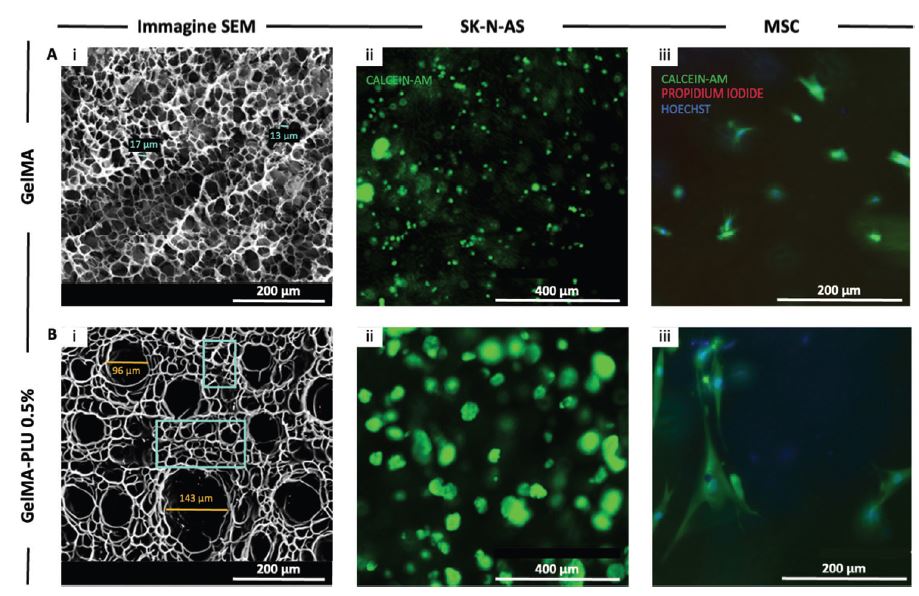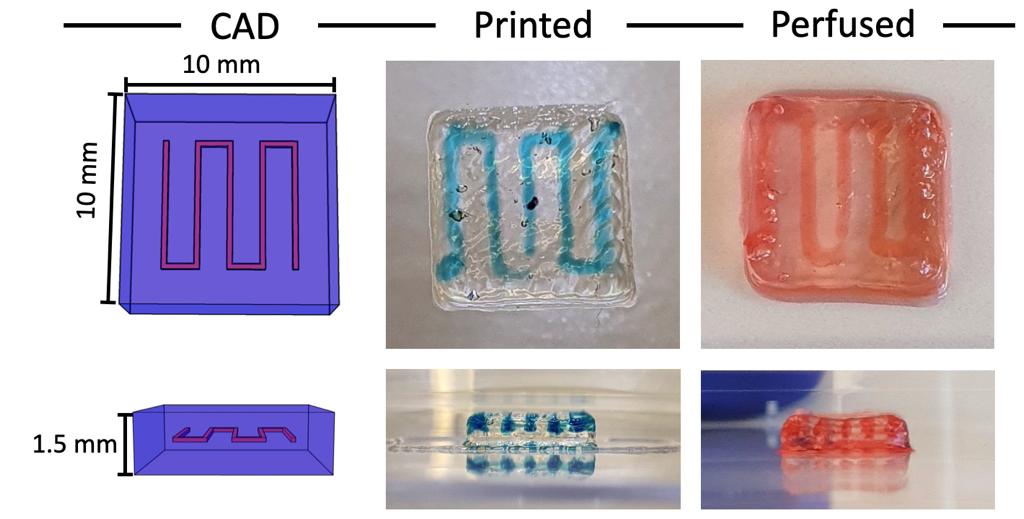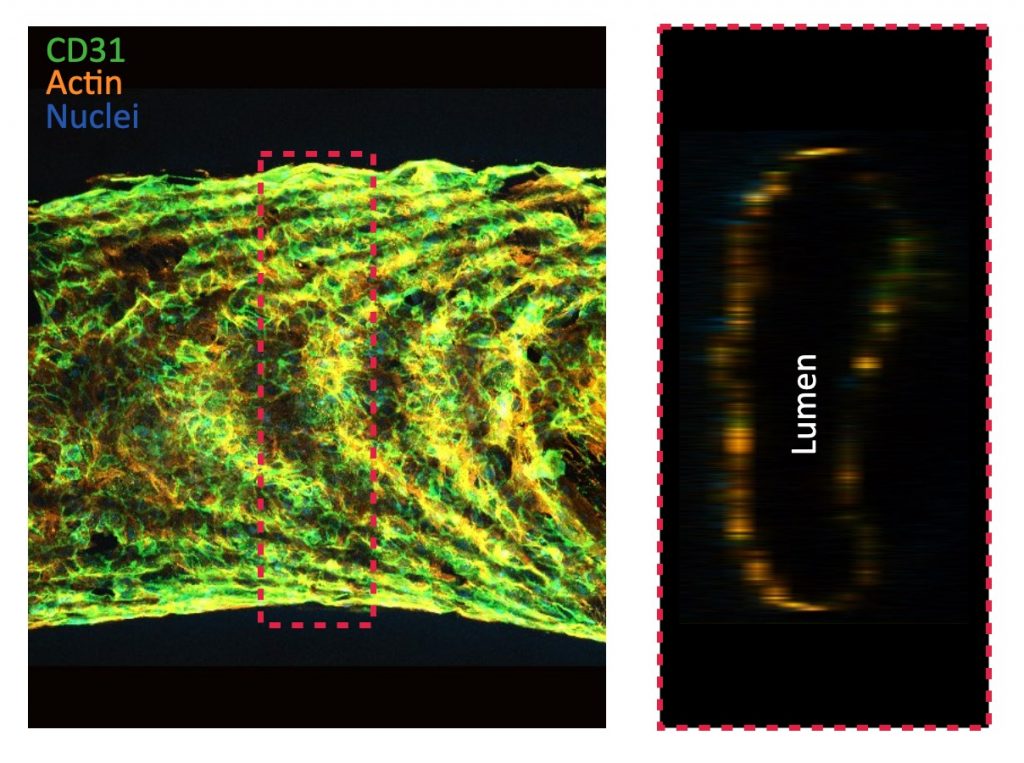3D bioprinting is an additive manufacturing process that involves the use of biomaterials, cells and biomolecules to fabricate three-dimensional structures that mimic the characteristics and function of specific natural tissues. The bioprinting process starts with modeling the three-dimensional constructs, creating a digital model equipped with a set of instructions for fabricating layer-by-layer the desired structure. Depending on the application, a biomaterial is mixed with cells to form a bioink and then is deposited on a printing plate following the instructions generated to fabricate the 3D model. In the BIAMET lab, this process is primarily used to produce vascularized tumor models for studying the premetastatic stage, and to create skin models to test the effect of drugs and cosmetics.
3D bioprinting for vascularized tissue fabrication
3D cultures and cell–laden hydrogel constructs are fundamental in biomedical research as they represent physiologically relevant models providing mechanistic cues to guide cell fate and function. In addition, advances in additive manufacturing techniques, particularly 3D bioprinting, not only allow for a precisely shaped construct, but also for the production of patient–specific patches. The ability to recapitulate the complexity of the in vivo milieu using 3D bioprinting is particularly important for studies involving the role of the tumor microenvironment (TME) in cancer, improving upon 2D cultures or scaffold–free 3D culture strategies.
3D bioprinted tumor models are already being developed in a variety of structures ranging from slices, grids, fibers, mini–organs, and custom shapes. However, to be clinically relevant, tissue constructs must be significantly thicker than the few hundred microns where diffusion is sufficient to provide nutrients to all cultured cells. A primary method for overcoming the hurdle of sustaining cells in the bulk is to create a vascular network within these cell–laden constructs.
BIAMET lab propose a fabrication method for vascularized 3D constructs based on sacrificial bioprinting, i.e., the use of two different bioinks to create hollow structures embedded in a cell–laden matrix. With this method, we succeeded in fabricating customizable endothelialized perfusable 3D constructs sustaining cell culture for over two weeks under continuous perfusion.




